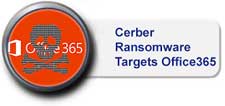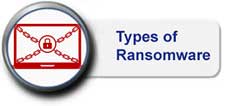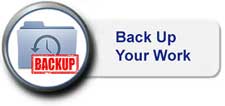IT Newslett for Students - Jul 2016
Page Content
| Cerber Ransomware Targets Office365
Cerber ransomware attacks started on 22nd June 2016, targeting Microsoft Office 365 accounts. It was managed to be blocked by Microsoft 24 hours later.
This ransomware infects user's PC via Office file attachment and will encrypt user files once user enabled the macro in the attached file. It will then play an audio file demanding a ransom to decrypt the files.
Microsoft advised that users who received suspicious attachments on June 22nd or June 23rd should delete the files immediately. |  |
Types of Ransomware Ransomware can be installed in your computer discreetly via phishing emails, Word document macros, and fake Adobe Flash installers. Ransomware cases are on the rise lately and there are various forms of those malicious programs which infect different operating systems and devices. Some types of ransomware are explained below: - Jigsaw ransomware – This kind of ransomware deletes encrypted file from the victim's computer for every hour that the victim failed to pay ransom.
- Petya ransomware – This ransomware denies the victim access to the computer by encrypting the master file table so that the file system is not readable.
- SimpleLocker – A ransomware that infects Android devices and encrypts the file on the devices.
- KeRanger – Ransomware that target Mac OS X computers. Like other ransomwares, KeRanger will encrypts any files it can find on the machine and demands payment from the victim to decrypt the files.
It is important to constantly update your antivirus software, and not to click on suspicious emails or links. It is better to be safe than sorry.
|  | |
Back Up Your WorkAssignments, projects, and tutorial guides are some of the important files to each and every student. As computers are growing more prominent to get work done, almost everything is stored on the machine itself. Despite the technological advancement of laptops and computers, they are still prone to problems such as OS corruption, hardware failure, and virus infection. That is why it is important and a good practice to constantly back up important work. Below are some of the common backup options:- - External hard drive/USB flash drive - External hard drive and USB flash drive are very affordable nowadays and they come with huge capacity. Both type of devices in the market now have USB 3.0 which supports fast read/write speed.
- Cloud storage - Dropbox and Google Drive offer free on-the-cloud storage where files which are uploaded and accessed anywhere when needed. It is a convenient file backup and storage method.
- Optical disc storage - This is a rather old school method of backing up files but disc media can be read on any computers that have optical disc drive (CD/DVD-ROM). Optical disc can be labeled and stored easily.
|  |
System MaintenanceSun, 24th Jul 2016, 10am – 10pm The network maintenance will affect the connectivity to NPal2 Student systems. All NPal2 Student services will be unavailable during maintenance period.
Please email to Dora.ITCare@np.edu.sg should you require further information or clarification.
|  |
|
|
|
|
Last updated: